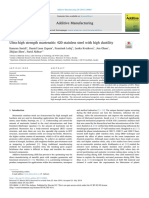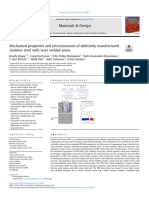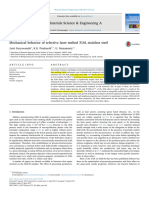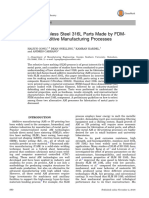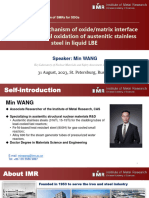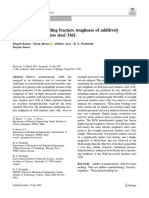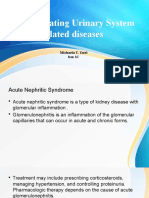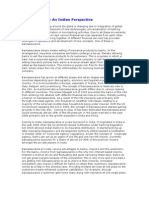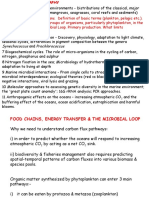0% found this document useful (0 votes)
12 views10 pagesComparative Analysis of Microstructure in Ferritic
This document presents a comparative analysis of the microstructure and mechanical properties of ferritic 439 stainless steel fabricated using conventional methods and selective laser melting (SLM). The study finds that SLM significantly enhances material strength and hardness due to finer microstructure and unique phase composition, resulting in a microhardness of 344 HV compared to 152 HV for conventionally produced steel. The findings highlight the advantages of additive manufacturing in producing complex geometries and optimizing material performance.
Uploaded by
Tony NguyenCopyright
© © All Rights Reserved
We take content rights seriously. If you suspect this is your content, claim it here.
Available Formats
Download as PDF, TXT or read online on Scribd
0% found this document useful (0 votes)
12 views10 pagesComparative Analysis of Microstructure in Ferritic
This document presents a comparative analysis of the microstructure and mechanical properties of ferritic 439 stainless steel fabricated using conventional methods and selective laser melting (SLM). The study finds that SLM significantly enhances material strength and hardness due to finer microstructure and unique phase composition, resulting in a microhardness of 344 HV compared to 152 HV for conventionally produced steel. The findings highlight the advantages of additive manufacturing in producing complex geometries and optimizing material performance.
Uploaded by
Tony NguyenCopyright
© © All Rights Reserved
We take content rights seriously. If you suspect this is your content, claim it here.
Available Formats
Download as PDF, TXT or read online on Scribd
/ 10














